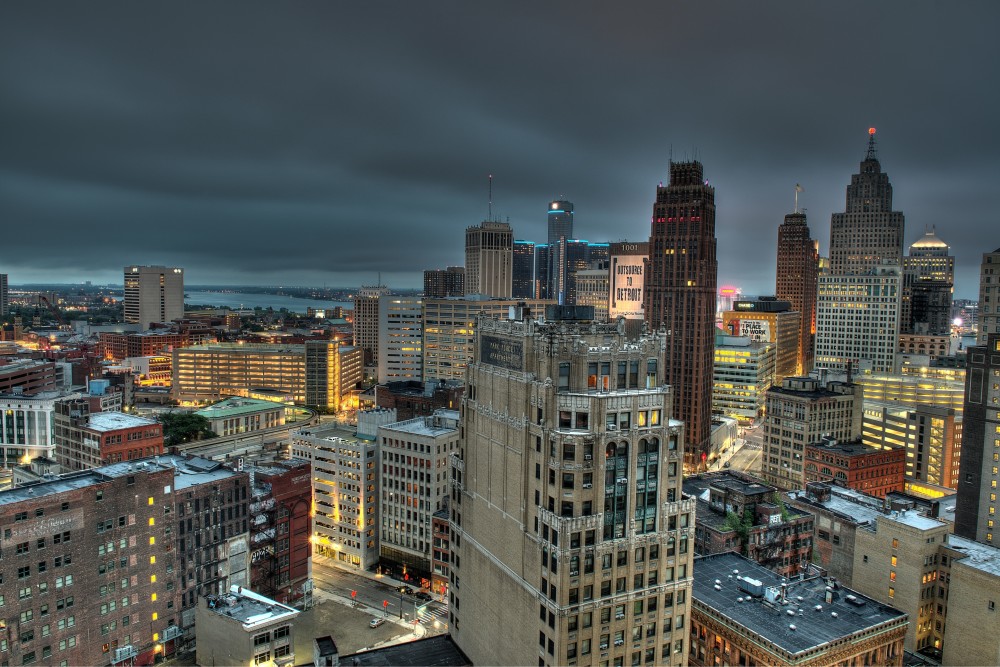By John Gallagher
Detroit Free Press
WWR Article Summary (tl;dr) Some longtime Detroiters say that oft-heard “blank slate” metaphor is disrespectful of residents who stuck it out in the city all these years.
Detroit Free Press
If you wish to spark an argument in some parts of Detroit today, refer to the city as a “blank slate” — as in “Detroit is a blank slate where anything can happen.”
You hear that term a lot as the narrative of Detroit’s comeback takes shape. The idea is that Detroit was so abandoned that it needed newcomers to totally reinvent it — artists and hipsters and out-of-towners who bring their money and ideas. Detroit, then, presents an empty canvas on which to sketch the future.
This was most recently captured in a New York Times column by a writer named Reif Larsen, who wrote, “There is space to dream big in Detroit, to do things that would be impossible almost everywhere else, and this is part of the reason it feels like the most exciting city in America right now.”
But longtime Detroiters say that oft-heard “blank slate” metaphor is disrespectful of residents who stuck it out in the city all these years. These are the Detroiters who weren’t necessarily waiting for people like businessman Dan Gilbert to come in and reinvent the place, let alone the artists and hipsters priced out of Brooklyn who moved here instead.
These longtime Detroiters exhibit a feisty attitude, captured in those T-shirt slogans “Detroit vs Everybody” and “Detroit Never Left.” And their message is both correct and understandable.
But in many ways the “blank slate” metaphor captures something real. After the 1950s, Detroit lost two-thirds of its population and 90% of its tax base. Today, the city counts something like 100,000 vacant lots and tens of thousands of empty buildings.
Moreover, for so many years its municipal government was broke and dysfunctional and headed for the bankruptcy that finally came in 2013. Major corporate backers had left for the exits. The city’s economic life had wound down like an old watch spring.
If Detroit didn’t quality as a blank canvas, a place ripe for reinvention, then no city ever did.
And the reinventors have produced real change. Abandoned rail lines became greenways like the Dequindre Cut. The industrialized waterfront transformed into the RiverWalk. Vacant lots sprouted as urban farms.
Whole new ways of doing things emerged from the crisis of the failed city. Philanthropy began to play a leading role in the transformation. Failed operations like Cobo Center and Eastern Market thrived under new nonprofit management once freed from inept city control. Entrepreneurs began to reinvent a city’s economy in the spaces left behind by departed manufacturing firms.
And some parts of the city today do present a blank slate. There’s the 22-acre empty parcel on the west riverfront where the Detroit Riverfront Conservancy, which operates the RiverWalk, is mulling four dynamic proposals to transform the former rail yard into a public park.
This idea of Detroit as a blank canvas inspired visionaries in other cities around the globe. The efforts in Detroit became a template for urban reinvention, Detroit the must-see stop on the tour of cities that were reviving themselves with new ideas and new leadership.
Although an imperfect analogy, it may help to recall how dramatically a city like Rome has evolved over time. In the time of the Caesars, Rome was home to more than 1 million residents. After multiple conquests by enemies, the population fell below 20,000 in the Middle Ages. Yet nearly 3 million people live in Rome today.
As author Matthew Kneale writes in his forthcoming book “Rome: A History in Seven Sackings,” to be published in May by Simon & Schuster: “There have been many Romes, each of which would be largely unrecognizable to Romans of other times.”
Or as Detroit author and TV personality Charlie LeDuff once said, “Rome fell. But a lot of people are walking around in Italian shoes.”
That could be Detroit’s story, too.
So, yes, let’s celebrate those who stayed behind and who held out here when the majority fled. We wouldn’t have a revival today without them. Let’s not forgot the working class and poor people of Detroit, especially the children, as we celebrate all the shiny and new.
But let’s also remember that history is flow and change, and that Detroit is evolving. And on this journey, both the longtime residents and the new faces ought to be welcome.














































































































































































































































































































































































